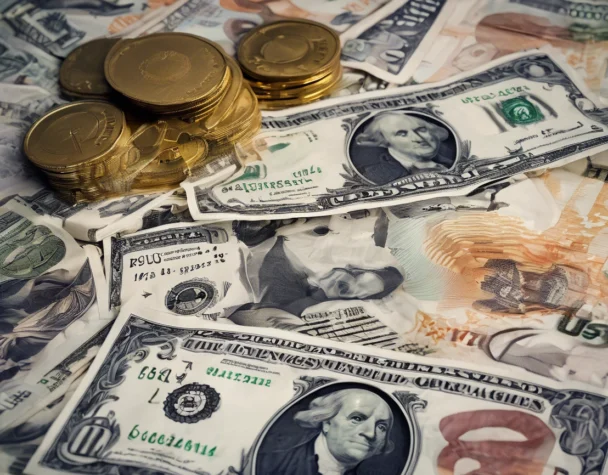
Forecasting Near-Term Fluctuations in USD/EUR Exchange
Thu, March 06, 2025In the ever-dynamic world of forex trading, the USD/EUR pair holds a particularly pivotal role, acting as a barometer for shifts in international economic dynamics. Given its influence, understanding the near-term fluctuations of this currency pair is crucial for investors, traders, and policymakers alike. As global economic conditions wax and wane, so too does the strength of the dollar against the euro, influenced by a myriad of factors ranging from interest rate changes to unexpected geopolitical events. This article explores the complexities of forecasting these movements and provides insights into the predictive tools that can aid in navigating these financial waters.
Navigating the Waves of USD/EUR Exchange
The USD/EUR exchange rate is influenced by a complex interplay of global economic factors. Key among these are the monetary policies set by the Federal Reserve and the European Central Bank (ECB). Interest rate decisions in particular can cause significant volatility. For instance, an increase in US interest rates typically bolsters the dollar, leading to a lower USD/EUR rate, as investors flock to higher returns. Conversely, expansive fiscal policies or lower interest rates in the Eurozone can weaken the euro. Analyzing these trends requires not only a keen eye on policy changes but also an understanding of their timing and potential impacts.
Additionally, economic indicators like GDP growth rates, unemployment figures, and inflation rates are critical in shaping market sentiment and, consequently, currency values. For instance, stronger-than-expected economic growth in the Eurozone can bolster the euro, while similar data in the U.S. might strengthen the dollar. Traders must keep abreast of these indicators, often released through government reports and independent market analyses, which provide frequent updates on economic health and are invaluable for making informed trading decisions.
Lastly, geopolitical stability plays a non-trivial role in the USD/EUR dynamics. Political events such as elections, trade negotiations, and conflicts can lead to market uncertainty, prompting volatility in the forex markets. For example, the uncertainty surrounding Brexit had a noticeable impact on the euro. Traders and investors must therefore maintain a vigilant watch on global events and be ready to respond to sudden changes that could affect currency stability.
Predictive Insights for Near-Term Currency Shifts
Advanced analytics and forecasting models have become essential tools in predicting USD/EUR exchange rates. Algorithms that utilize historical data, combined with machine learning techniques, can identify patterns that may not be immediately apparent to human analysts. These models take into account a variety of inputs, including economic indicators, market sentiment, and geopolitical events, offering a comprehensive approach to understanding potential market movements.
Furthermore, sentiment analysis, particularly through the parsing of vast amounts of financial news and social media, provides another layer of insight. By gauging the mood of the market, traders can anticipate shifts that might not yet be reflected in the hard data. This real-time analysis can be particularly useful in a market as fluid and rapidly changing as forex.
However, while predictive models offer valuable insights, they are not infallible. The chaotic nature of global events means that there is always an element of unpredictability in forex markets. Traders must therefore use these tools as part of a broader strategy that includes close monitoring of market developments and a readiness to adapt to new information. Combining quantitative forecasting with qualitative market insights offers the best approach to navigating the complex and often turbulent waters of the USD/EUR exchange.
The USD/EUR exchange rate continues to be a crucial financial indicator in the global economy, influenced by a myriad of factors from central bank policies to economic indicators and geopolitical events. With the aid of advanced analytics and a keen understanding of market dynamics, traders and investors can better navigate this volatile landscape. While predictive tools enhance the ability to forecast near-term fluctuations, the inherent unpredictability of the forex market requires a flexible, informed approach to trading. Thus, a blend of sophisticated forecasting techniques and vigilance in monitoring market changes remains the best strategy for those looking to understand and capitalize on USD/EUR exchange rate movements.

